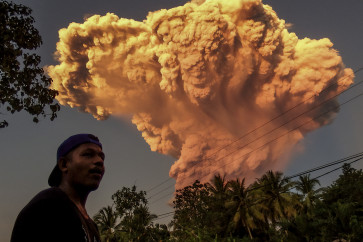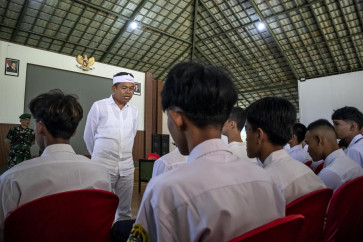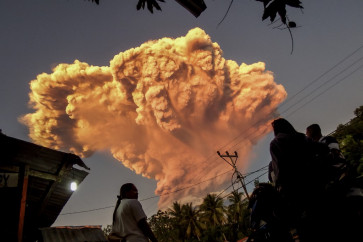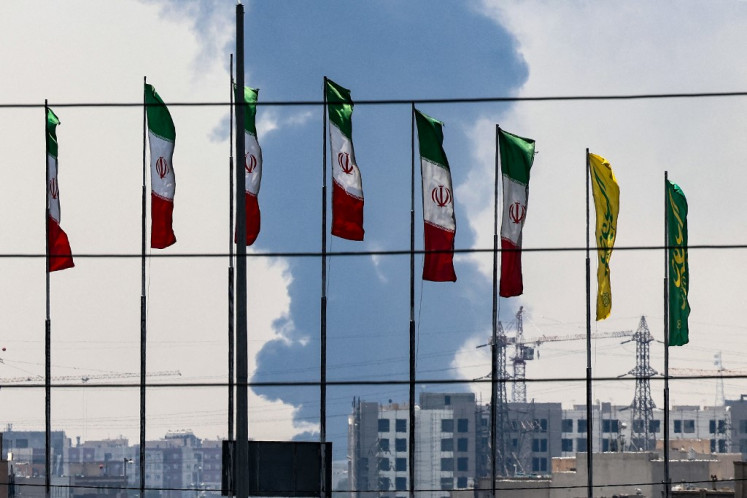Popular Reads
Top Results
Can't find what you're looking for?
View all search resultsPopular Reads
Top Results
Can't find what you're looking for?
View all search resultsHow millennial nostalgia fueled the success of 'Pokemon Go'
Change text size
Gift Premium Articles
to Anyone
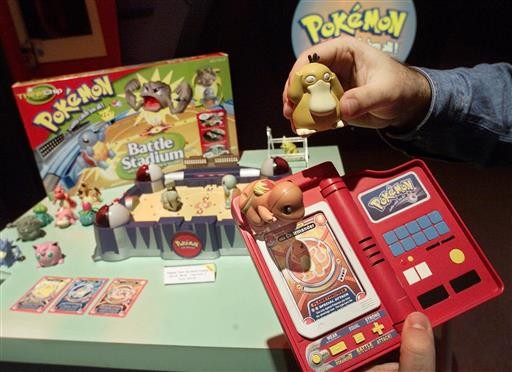 In this Feb. 15, 2000, file photo, a Hasbro employee shows off components of the Pokemon Battle Stadium at the company's showroom in New York. A survey shows about 90 percent of adults who have downloaded the new "Pokemon Go" smartphone game in 2016, which lets you find cartoon monsters in the real world, are between 18 and 34-years-old, many who are old enough to have fallen in love with Pokemon the first time around. (AP/Richard Drew)
In this Feb. 15, 2000, file photo, a Hasbro employee shows off components of the Pokemon Battle Stadium at the company's showroom in New York. A survey shows about 90 percent of adults who have downloaded the new "Pokemon Go" smartphone game in 2016, which lets you find cartoon monsters in the real world, are between 18 and 34-years-old, many who are old enough to have fallen in love with Pokemon the first time around. (AP/Richard Drew)
T
he children who once dreamed of capturing real-life Pokemon starting in the 1990s are now the nostalgic millennials helping fuel the worldwide success of "Pokemon Go."
Take Bailey Richardson. Now 26, her grandest dream was once to set out in the world and capture and train the big-eyed, shrieking creatures known as Pokemon, originally numbering 151 in all.
On a recent night, she was outside playing "Pokemon Go" when someone shouted that they had found Aerodactyl, a rare, pterodactyl-inspired monster. It was raining, but she joined everyone around her, running down the street in pursuit of the ancient creature.
"I think the nostalgia element makes it so easy to talk to strangers," Richardson said while exploring downtown Portland this week. "We share these roots."
In between glances at her smartphone to check for nearby Pokemon, Richardson reminisced about choreographing endless dance routines to the "Pokemon: The First Movie" theme soundtrack with her cousins and brother.
"As much as I love this, if it hadn't been Pokemon, I wouldn't be playing," she said.
In the fall of 1998, Pokemon mania hit U.S. shores as Nintendo released its popular "Pokemon" Game Boy games and a companion television show hit the airwaves. Soon, the cartoon creatures who shrieked their own names were everywhere: trading cards, comic books, stickers, movies, a catchy rap song.
About 90 percent of adults who have downloaded the new "Pokemon Go" smartphone game, which lets you find cartoon monsters in the real world, are between 18 and 34 years old, according to mobile advertising company StartApp — many of them old enough to have fallen in love with Pokemon the first time around.
Then as now, with stories of people wandering into traffic or being lured into robberies by the game, frightening news stories abounded.
A New York Daily News headline blared in 1999: "Boy Stabbed Over Pokemon; L.I. 9-year-old Charged with Knifing Teen for Card."
In Turkey, the Pokemon animation series was ordered off the air in 2000 after two children injured themselves by leaping from the balcony of their homes in imitation of a character.
News outlets delved into the "dark side" of Pokemon amid worries it would inflict children with greed, violence, addiction, detachment from reality and seizures.
Such anxiety was misplaced, said Arizona State University professor Joseph Tobin, who studies children's media culture and edited the 2004 book "Pikachu's Global Adventure: The Rise and Fall of Pokemon."
Tobin, who studied children who played Pokemon and found no evidence of behavioral issues, called it a "more benevolent kind of passion than other video games and hobbies."
Fifty-year-old creator Satoshi Tajiri, who collected beetles as a boy in Tokyo, has said he dreamed of creating a computer game allowing children to reconnect with nature by caring for bug-like creatures.
"I like to think he is smiling at the idea that people are getting close to his experience as a boy with this new technology," Tobin said.
Pokemon's focus on nurturing, battling and collecting the miniature "Pocket Monsters" appealed to both boys and girls, long divided by pink and blue toy aisles.
"Now it can be a whole world of monsters on one little hand-held device," Tobin said, noting the new game's appeal across ages. "And it has a kind of softness. I think you can see that still with the young adults who grew up playing."
Larry Pang, 21, stopped playing years ago as he grew up and newer, less popular versions of Pokemon games featured hundreds more creatures.
"It got way too big, way too much," said Pang, perched on a pillar near crowds gathered near a Portland monument.
But now he's back. Pang said he likes how "Pokemon Go" has begun with the original 150 creatures, whose names and images he remembers from playing trading card games with friends.
"It's just fun bonding with people," he said. "You actually have to socialize and meet face to face. It's really nostalgic for me."

